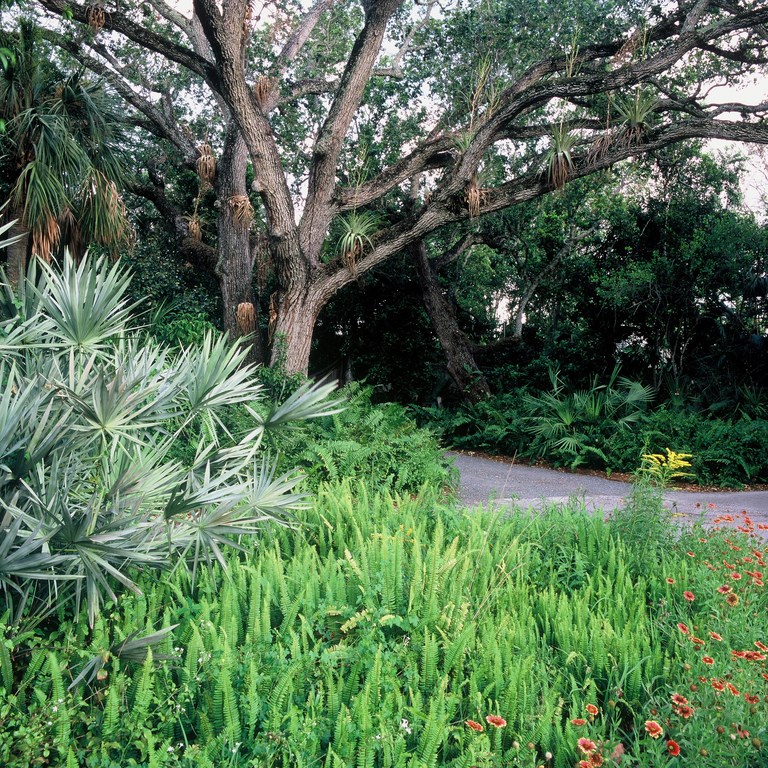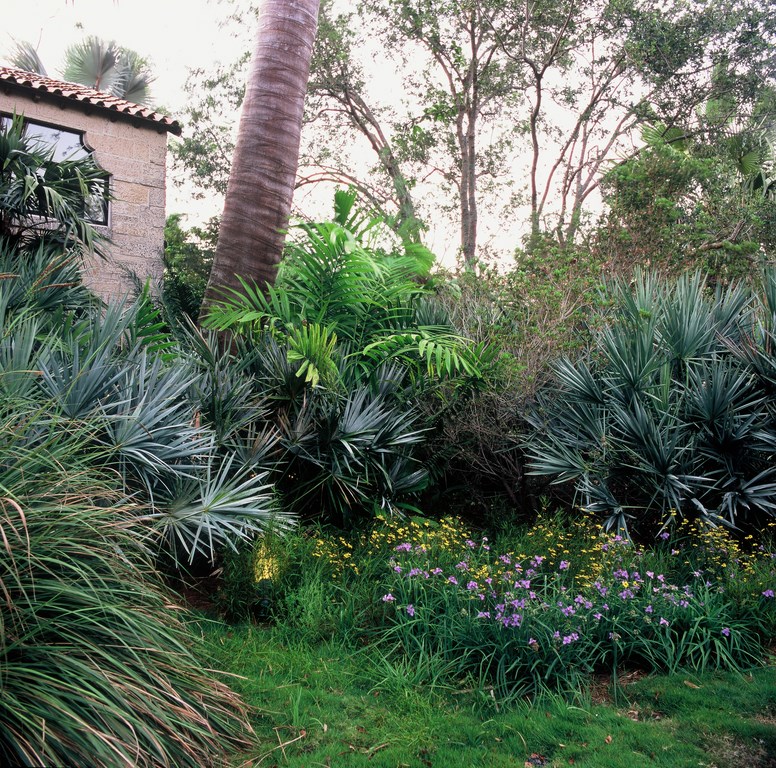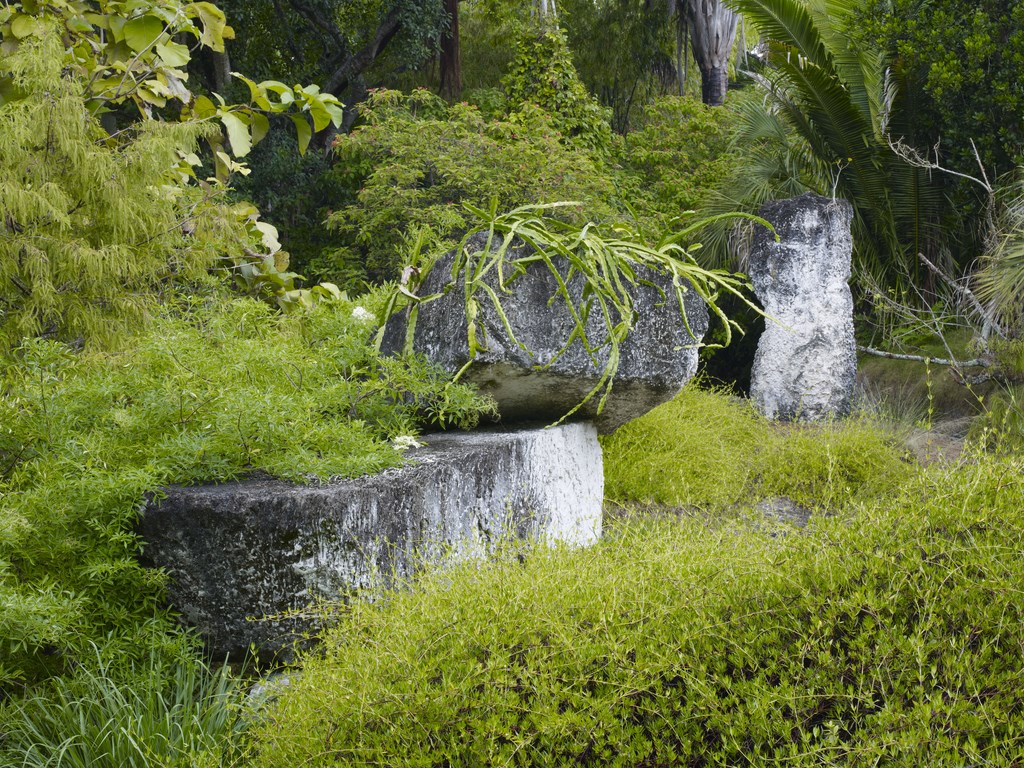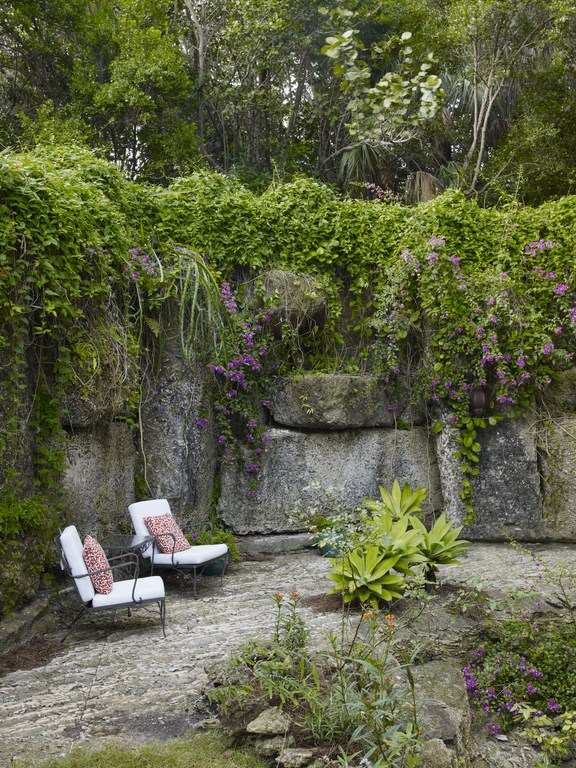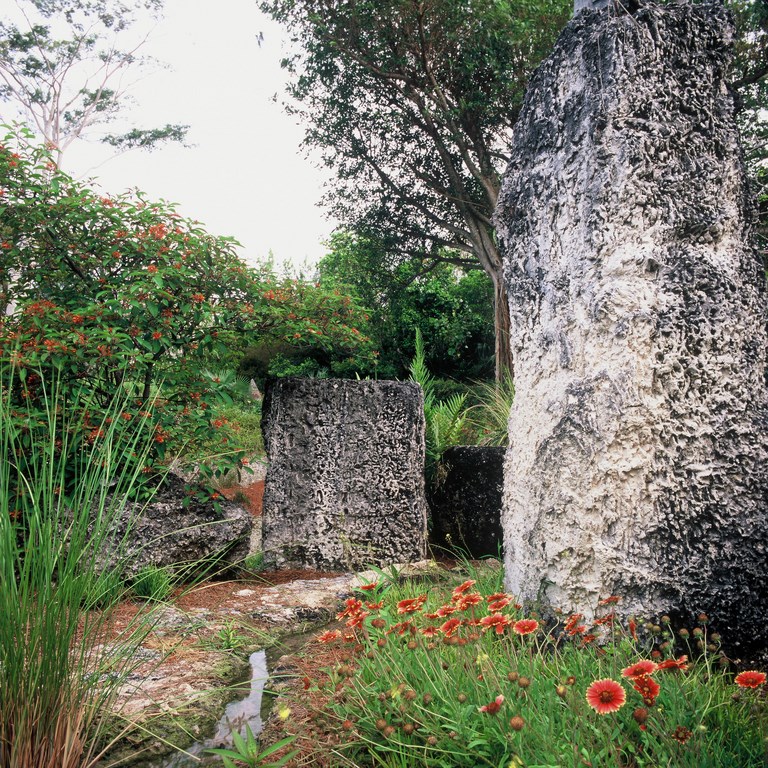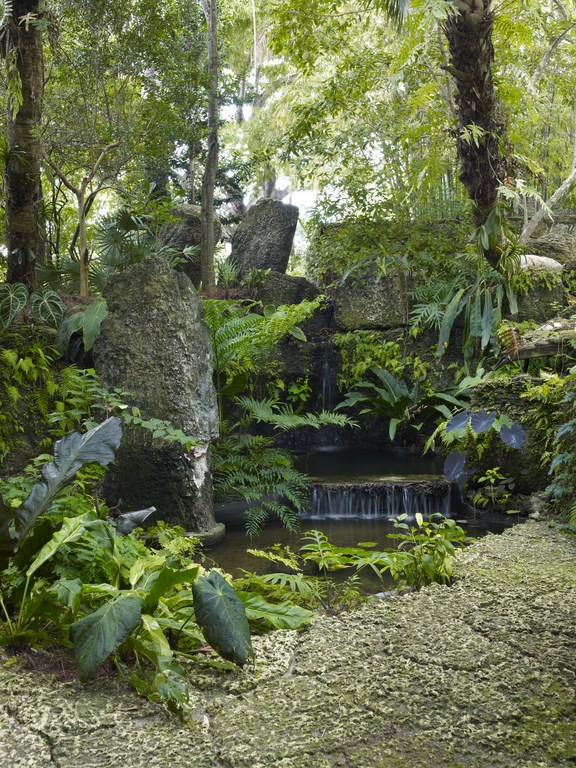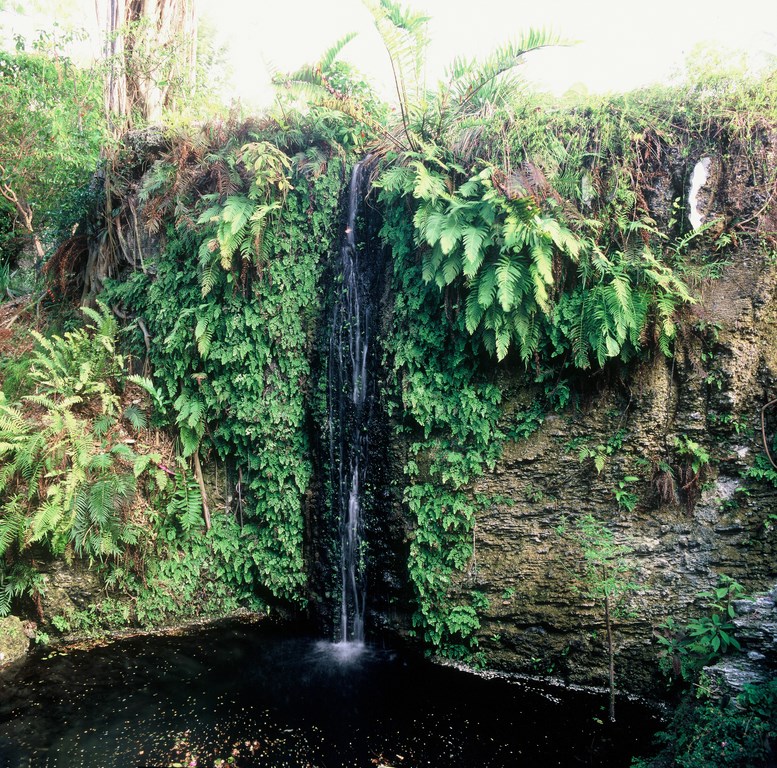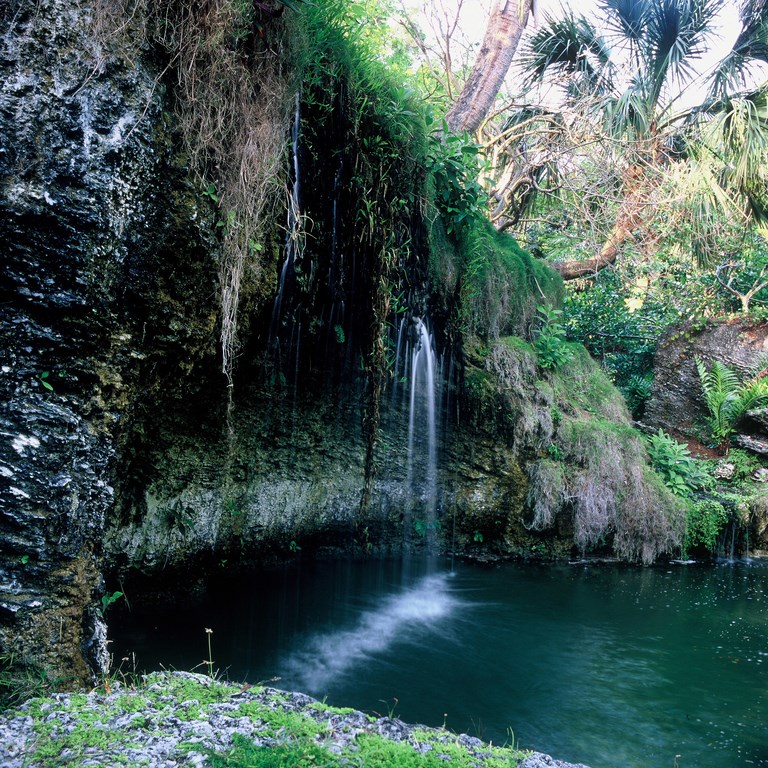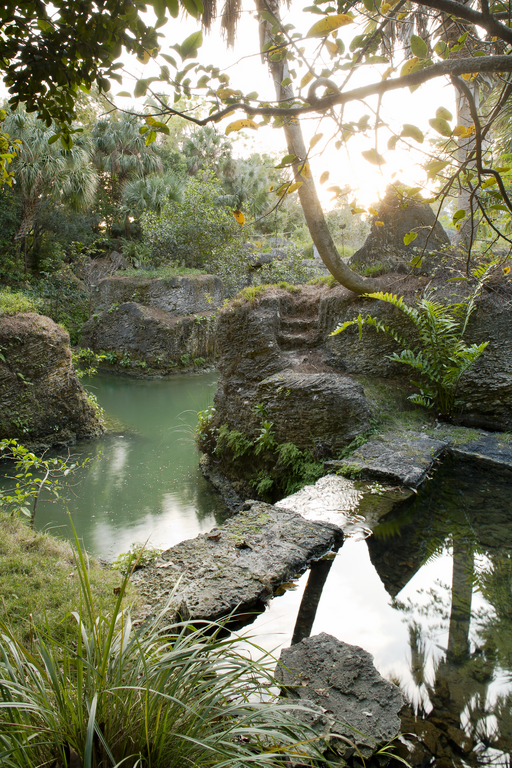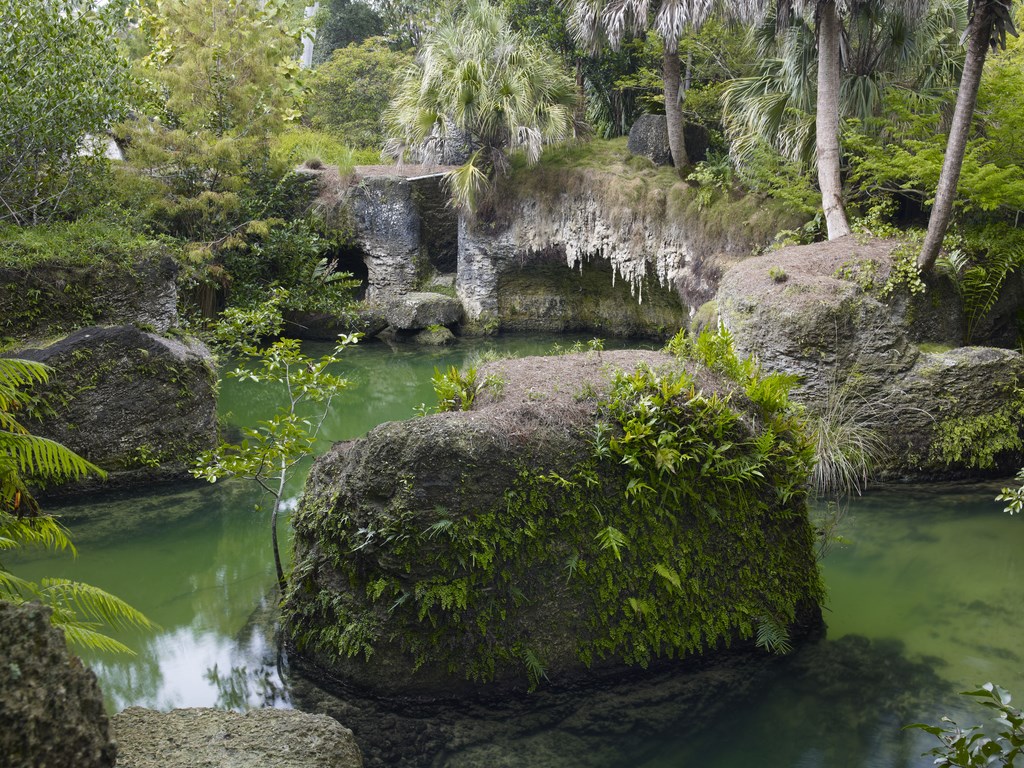A Wild Retreat

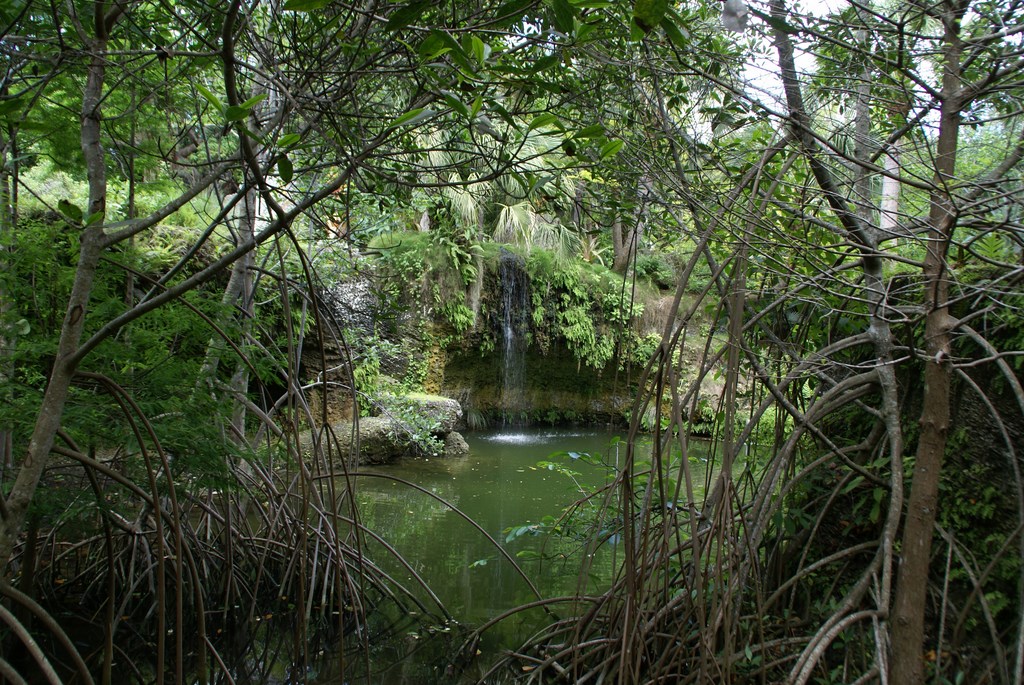
The untamed profusion of the South Florida landscape informed the design of this expressive garden. Filled with native plants and deep, inviting waters, it’s a haven for abundant local wildlife as well as a luxurious retreat for the homeowners and a haven for their pet pig.
Set on a historic road in a protected-wildlife area of Coral Gables, Fla., the property had been a mango and avocado grove until Hurricane Andrew changed everything in 1992. The home, fortunately, had been built in the 1920s from stone quarried nearby and had survived, but the groves and garden areas were utterly destroyed and hadn’t been redefined afterward with any sort of cohesive plan.
This project was a challenge for me because, to that point, I’d never ventured very far into the realm in which the sheer effusion of nature defines a space.
DIGGING IN
My first step involved re-establishing the vehicular patterns at the front of the property – a modest way to start, perhaps, but one that set the tone by sparking the impression that this was a world separated from its urban surroundings.
| The driveway approaching the house is engulfed in masses of native plants of various colors, forms and textures. It follows a winding path that effectively separates the substantial private world we’ve created from its bustling public surroundings. (Photos by Richard Felber Photography, New York, N.Y.) |
The new driveway entrance starts at one corner of the property amid a stand of old oak trees. We made it distinctive by setting the gate back a full 50 feet from the property line, allowing masses of native plants to mask the ultimate access point.
The clients were involved in every step of design development and proved to be wonderful collaborators. They loved this front treatment and were fully on board with my emerging approach by the time we shifted our attention to the back of the property, where we found an existing Grecian-style pool, a lawn sloping to a basketball/tennis court and open views to neighboring homes courtesy of the hurricane’s elimination of all established, mature plantings.
| The blocks and slabs of oolite we found during excavation became key building components and visual accents all around the property, from plant-encrusted outcrops to stacked-stone walls and impressive monoliths. (Photos at left and in the middle by Marion Brenner Photography, Berkeley, Calif.; at right by Richard Felber Photography) |
We began by excavating the slope to fashion a secluded pen for the pig. In doing so, we unearthed blocks of oolite, a sedimentary stone that comes out as large pieces. Rather than discard this material, we found uses for it throughout the property. Eventually, this led us to the idea of shaping a large lake in which these blocks would define the contours of a richly naturalistic aquatic environment surrounded by native vegetation.
INSPIRATION
There are actually two bodies of water here linked by a dramatic waterfall: a lower basin filled to the natural level of the water table and an upper basin made with gunite concealed by the extracted stone.
| Linked by a spillway, the two large bodies of water feature multiple small waterfalls that set the tone for the backyard, visually and aurally. The various arrangements of stone, plants and water owe much to the work of my mentor, Roberto Burle Marx, who found ways of making monumental built spaces seem wonderfully spontaneous and natural. (Photo at left by Roger Foley Photography, Arlington, Va.; at middle left by Marion Brenner Photography; and at middle right and right by Richard Felber Photography) |
This material was also used to create remarkable stone islands in the lower pond inspired by the work of my friend and mentor Roberto Burle Marx, the great Brazilian landscape artist who often used dramatic landforms in conjunction with water.
The plants brought in for this project are too numerous to list: Suffice it to say that South Florida has the greatest biodiversity of any region of the United States and that we did our best to represent as much of it as we could. Red maples, palms, oaks, cypresses and a host of other large specimens share the space with aquatic plants, various groundcovers and flowering vines to create all-encompassing masses of flora.
Raymond Jungles is founder and principal of Raymond Jungles, Inc., a landscape architecture firm based in Miami, Fla. His prime inspiration and the key to his passion for landscape architecture stems from his longtime relationship with Brazilian artist and environmental designer Roberto Burle Marx, and his current practice is firmly rooted in Florida and the Caribbean basin with a focus on residential, resort and community design. This November, he will be the keynote speaker for 25th annual conference of the Association of Professional Landscape Designers, to be held in Orlando in conjunction with the International Pool|Spa|Patio Expo. For details, click here.










